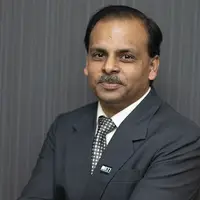India’s power sector is plagued by widespread issues of losses and theft, populist tariffs, unviable subsidies, poor customer service, and poor infrastructure. Despite various initiatives undertaken by India’s State Governments, including the reorganization of electricity boards and the segregation of distribution businesses, these problems continue to persist with many power utilities in financial stress.
One of the major hindrances to improving the power distribution sector in India has been the high aggregate technical and commercial (AT&C) losses across state-owned distribution utilities, also known as Discoms. These AT&C losses are due to a combination of inaccurate metering, outright energy theft from customers, defaults in payment, and inefficient billing collection. Based on our experience in the Indian power sector, one of the most important factors contributing to these losses is the lack of staff training and engagement at Discoms.
RTI International India recently undertook a project to assess the impact of India’s investments under the Restructured-Accelerated Power Development Reforms Program (R-APDRP). This 2008 scheme—a follow-on to a 2003 program—focused on reducing AT&C losses, improving technology, and strengthening the IT infrastructure of India’s state utilities.
Through this work, we surveyed and analyzed the effectiveness of IT implementation in state utilities across a sample of towns in northern India. We found that a key challenge across Discoms is the limited capacity of staff and personnel at the ground level, where the bulk of the day-to-day operations are executed. To derive effective usage under R-APDRP investments, Discoms must invest in staffing and training their personnel on field and in frontline IT-enabled services. This includes building the capacity of Discom staff across rank and file, and an overhaul of their governance process and management structure. This could be within the State-owned setup or in partnership with the private sector. Both may work, as the solution lies in building capacity at the ground level.
We must also reimagine the way Discom staff are currently employed and engaged in the following ways:
- Link staff’s terms of employment to performance delivery in compact geographic areas
- Arm staff with a high degree of autonomy and delegation
- Provide staff with uninterrupted tenure
- Offer staff high rewards and resources for mentoring and strategizing.
As part of a recent pilot study that RTI India undertook for an administrative unit at a state utility, we observed that a highly effective way to reduce AT&C losses is by making local operational staff directly accountable for it. This incentivizes them to improve operations as well as engage with the community. Such a high level of delegation, accountability, and incentive structure is an idea that has not yet been tested in State Utilities due to inflexible terms of employment and employee-engagement in the Government setup.
But what if some employees volunteered to opt for this employment model and took it as a challenge to turn around their utility operations in a time-bound manner? KESCO—a state-owned Discom in Uttar Pradesh—reduced AT&C losses sharply when threatened with privatization (which was never actually carried out). Inspired by that success story, what if we replace the “threat of privatization” with “an alternative employment model” whereby rewards of success-sharing could usher in a similar turnaround in a politically more palatable manner.


